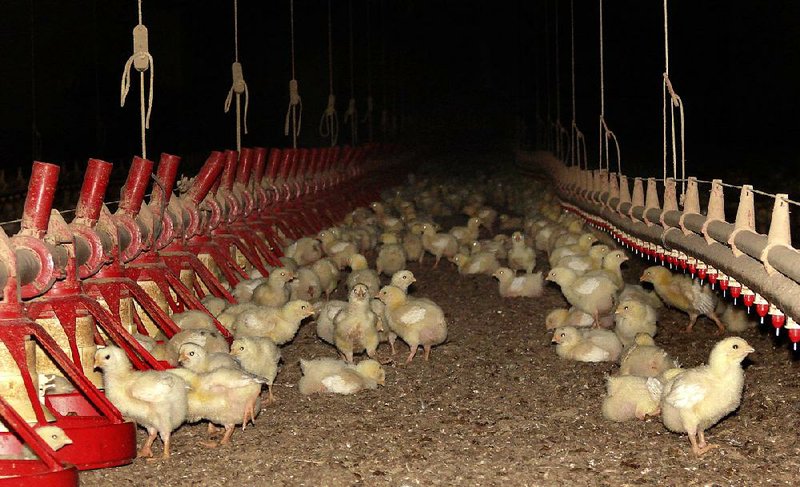It’s no secret that chickens bred for meat grow really fast.
According to the National Chicken Council, broiler chickens mature 60 percent faster and weigh two times more than they did nearly a century ago. But after years of breeding to sell the most optimal broiler chickens, some big companies are taking a step back to be viable in the future.
At this week’s Chicken Marketing Summit in Asheville, N.C., industry leaders touched on opportunities and challenges that big poultry companies are facing, such as marketing to millennials, adapting to animal welfareminded consumers and cost implications for meeting consumer demands.
A recurring topic of contention was whether poultry companies should look into producing “slow-growth” chickens, Tom Super, spokesman for the National Chicken Council, said Tuesday.
Ken Shea, Bloomberg senior analyst of food and beverages, said the movement toward slow-growth chicken is a natural extension of the allnatural and free-range models.
Currently, Perdue Farms is the only large U.S. chicken company that announced it’s researching “slow-growth” chicken production. According to Perdue’s 2016 report, the company’s goal was to address broiler chicken growth rates that cause discomfort to birds.
The Maryland-based company said Monday that it has raised and processed two slower-growing breeds for small bird production. The company said in its Commitment to Animal Care Report that it crossbred slower-growing roosters with conventional hens, raised the progeny and processed them for commercial sale.
Perdue is searching for the right growth rate, largely because of retail interests. Last year, Whole Foods and Panera Bread announced they wanted suppliers to shift toward slower-growing broiler chickens in response to animal-welfare concerns.
Animal-welfare activists say faster-growing birds are prone to mobility issues because of weight.
A common myth is that broiler chickens are larger because of antibiotic injections and additives, Super said. The increased growth rates and sizes seen in broiler chickens today are from years of breeding, he said.
The National Chicken Council disagreed that growing birds fast causes health defects or animal suffering, but if consumer demand spiked for a slower-growing bird, the council would listen, Super said.
“If our customers want a chicken that grows slower, we’ll do it, but we want them to have the facts,” he said.
According to a National Chicken Council study released in January, if one-third of U.S. broiler production shifted to slower-growing breeds, then nearly 1.5 billion more birds would be needed to produce the same amount of meat that’s currently produced.
The study cited additional costs for the farmer and companies, including increased water consumption, more feed requirements, additional land and more manure produced. It also would mean fewer flocks for farmers per year, which would be reflected in what consumers pay for the product.
Martin Thoma, principal of the Thoma Thoma marketing firm, said that from a consumer standpoint, millennials have proved to be more socially conscious and willing to pay more for products in line with their values.
According to Pew Research data, about 6 in 10 U.S. adults younger than 30 are more likely to buy organic-labeled produce, because they believe it’s the healthier option.
“Consumer perception is reality,” Thoma said. “And if they think food is bad, they will move away from the products.”
Tyson didn’t comment on whether it is experimenting with slow-growth chickens.
